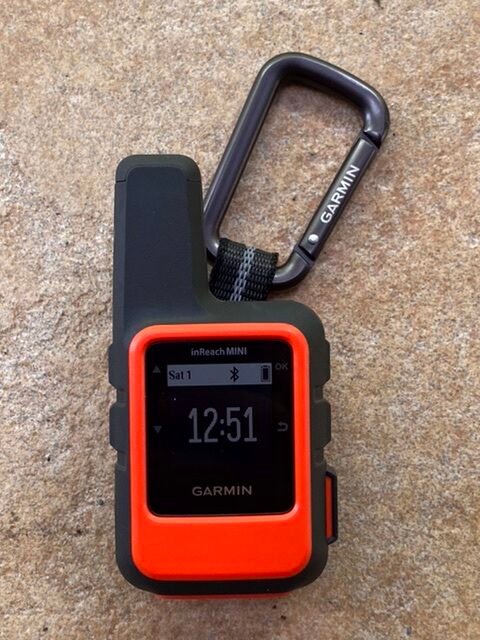Now that you have most the major items covered, Big3, Kitchen, lets look at some of the necessities that don’t take up much space. Hygiene and medical supplies are critical to staying clean while backpacking.
If you are out on the trail for more than a couple of hours you are likely to need to go to the bathroom and no matter how long you are out you should have some form of medical kit. Accidents can happen from the most unusual of places. I was hiking in Yosemite at Hetch Hetchy when a squirrel happened to chew through a pine cone just as I was walking under the pine tree. The result was a heavy, sharp pine cone scraping down my right arm. The resulting carnage with completely unexpected for a day hike – but luckily with a bit of handy bandaging from the medical kit we were able to continue on.
Hygiene Kit
The major aspect of hygiene that seems to concern people when backpacking is going to the bathroom. If you are very lucky you might find a pit toilet in the wilderness – but these are very few and far between (there was one in the Alpine Lakes area of Washington that had the best views ever for a bathroom stop!).
Hygiene considerations are a little easier, especially on longer hikes and thru-hikes. Taking a pee is usually no more than finding a semi-secluded spot behind a tree and making sure you are obeying Leave No Trace principles. Nobody wants to be filtering the water you just pee’d in.
Tools of the trade for hygiene
For number 2 – you’ll need to be able to dig a cat hole that is around 8 inches deep. Some folks will claim to be able to use a tent stake or stick, but I highly recommend having a small trowel. The Deuce of Spades is about the lightest around. If the ground is super hard it can be a bit of a pain as the handle is quite sharp.
The old practice was to bury your toilet paper in your cat hole as well. But as the backcountry has got more popular, unburied or dug-up toilet paper has become a real unsightly problem. Additional toilet paper takes a lot longer to decompose than the poo itself. My recommendation is to not use toilet paper but to use wet wipes and carry them out. Absolutely do not bury them – even if they say they are bio-degradable. Carrying out TP or wet wipes is really not an issue. I always have a bag of doggie bags in my hygiene kit and use one of those (after all it’s what I use for Hunter’s number 2 as well). After a couple of days, I’ll combine several bags together and seal them in a separate bag – there is almost no smell from that at all.

I’ll also take a least one WAG bag with me. In some areas, these are mandatory (Mount Whitney) and if you find yourself in a place where you really can’t dig a good cat hole – then do the responsible thing and carry out your waste. WAG bags have a chemical component that will counter the smell of what you are carrying.
Rather than describe how to poop in the wilderness – Andrew Skurka has a great article on the practicalities.
In addition to this – bring some hand sanitizer.
And finally, for you older folk or just simply those who don’t want to get out of their tent at 3 in the morning – you can consider bringing a pee bottle. The backpacking favorite seems to be a well-marked Gatorade bottle, as they have a wide mouth. Just make sure to be a good aim and secure the lid really well afterward. Also works well if the rather is terrible. The biggest downside of this is some of the best star shows you’ll see are when you get out of your tent in the middle of the night.
Cleaning those teeth
Not much different in needing to keep teeth clean. Just need a travel-size toothpaste and a toothbrush. Often folks will shorten the handle of the toothbrush just to save a little room. Not a bad idea to take some floss too. (If you want to be space conscience just take the spool from the middle of the floss – not only can you use floss for cleaning your teeth – it makes great thread for emergency repairs).
You’re going to smell – how to stay clean
Don’t bother with the fancy soaps and deodorants – if you are hiking a long way – you’ll sweat and smell. Basically, all I’d recommend is bringing a small amount of Campsuds. If you need this it will serve as an all-purpose cleaner for washing yourself, your clothes, and your kit. However, don’t jump in the nearest lake and start washing with soap. Bring water back from the source and use something like a bandanna to give yourself a clean-up. Rinse the bandanna away from the water source too. Again this is all part of leave no trace and making sure you don’t get soap into the water sources.
If you are all set on your hygiene and medical kits for backpacking, check out some of my other gear recommendations.
Medical Kit
You’ll see a huge variation in medical kits that folks will take on trail. From those that way just a few ounces – to something that looks more like the inside of an ambulance. This seems to be one area where folks want to be over-prepared.

A couple of years ago I took a wilderness first aid class (these are excellent if you are going to be in the backcountry – NOLS runs excellent classes, often in conjunction with REI), and outside of the smallest of cuts and ailments, the overriding message was just focused on stopping the bleeding. That’s helped me hone my first aid kit a lot.
For a beginner, I’d recommend just getting a complete kit like this.
What do you need to treat with your medical kit?
- Blisters – so moleskin, scissors (which might be on your knife)
- Bites – antihistamines
- Headaches / pains – ibuprofen
- Stomach problems – Imodium, etc
- Tape – this is pretty multipurpose and will strap a sprained ankle as well as fixing a shoe
- Gauze – a gauze pad, with the tape will hopefully suppress any bleeding you might encounter
- Couple of bandaids & antiseptic – for those minor wounds
Other tips for staying clean and healthy
I have probably mentioned it elsewhere but I’ll throw in two more items. Sunscreen, always make sure you have enough sunscreen and reapply often during the day. Being from a more northern latitude, not only do I use a lot of sunscreens – I generally hike in long pants and a shirt, with a Sahara-style hat. The second is hand sanitizer. I generally have two small bottles of hand sanitizer. One in my hygiene kit and one in my medical bag. The one in my hygiene kit I’ll only use for when I got to the bathroom. The second one I use before meals. This might be overkill – but works well for me.
After you get back from your hike – if you used anything from your medical kit make sure to replace it. Either make a note and ensure you buy what was used before the next trip or simply replenish from supplies you might have at home. You definitely don’t want to be on trail and find what you need is missing.
As always you can often save a lot of space and sometimes weight by repacking items. You don’t need 3oz of sunscreen or toothpaste. Although these savings can seem small – they will all eventually add up to saving a pound or more.
Once you have your medical and hygiene kits together, staying clean and healthy backpacking is pretty easy. You’ll just be able to grab these each trip and you’ll be ready to go.






